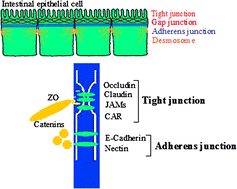Molecular mechanism of intestinal permeability: interaction at tight junctions
Abstract
The intestinal barrier plays a critical role in humans in the transport of nutrients and macromolecules. At the same time, it has to provide an effective barrier to harmful macromolecules and microorganisms. The


 Please wait while we load your content...
Please wait while we load your content...